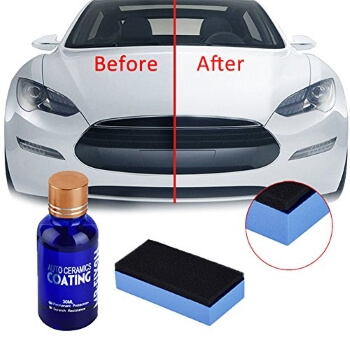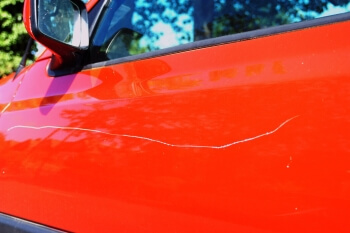Ceramic Coating - What is it?

Regular use and cleaning of a car will, despite the best efforts, lead to swirl marks, chips and stains on the exterior of the vehicle. This is true even if the car is brand new. In addition, water spots, dirt, and grime start clinging to your car the day after you give it a thorough wash.
Yet there is a product that provides protection from all these environmental hazards which does not require repeated applications and which makes a car easier to maintain. This is ceramic coating, sometimes called nano-ceramic coating. The basic chemical composition of a ceramic coating is Silicon Dioxide (SiO2). Ceramic coatings may also be referred to as quartz coating.
Ceramic coating can be expensive, but this can be balanced out by the fact it adds value to your car. There are a lot of claims made about ceramic coating, not all of them entirely accurate, and much has been written for marketing purposes.
Ceramic Coating
Ceramic coating offers both protection and shine to a vehicle that is not possible from careful washing on a regular basis, even if this is with the application of a new coat of wax every few months. Depending on the coating used they are suitable for use on paintwork, wheels, glass and plastic trim.
A ceramic coasting is a liquid polymer which is applied by hand to the outer surface of a vehicle. The coating creates a bond with the vehicles factory paint through a chemical reaction and this creates a protective layer that also shines.
There are many ceramic coating products on the market. The principle differences are the amount of Si02 content in the product. Some have levels as low as 5% or as high as 70%. Generally, the higher the level of SiO2 the more durable the product will be.
Ceramic coating is an alternative to a premium wax as it does not wash away or break down. Depending on the number of coats, it is either a permanent or semi-permanent bond and with appropriate maintenance can have your car looking like new for years with minimal maintenance. Many ceramic coatings installers offer warranties over several years, whilst also offering annual maintenance of the coating.
A ceramic coating will have your car looking like new, but it is not a maintenance-free if you want your car to continue to look good. The car will always get dirty so will need washing to maintain the shine, but this is usually less work than before to reach the same results.
Make sure to read my guide on how to correctly apply ceramic coating.
What ceramic coating cannot do

A ceramic coating can help preserve a vehicle’s exterior and reduce ongoing maintenance needs. However, it is not a miracle cure for every problem. Ceramic coating cannot eliminate all scratches, swirl marks, or rock chips.
In the marketing of ceramic coatings, claims are made that it improves hardness up to 9, or 9H. This doesn’t mean the coating is resistant to scratches, just that a pencil registered as 9H will not scratch it (pencils are graded from 1 – 9 with 9 being the hardest). Therefore, only the lightest abrasions will be protected by the ceramic coating and it certainly is not resistant to rock chips. For protection from rock chips, you need paint protection films, which are thick layers of a vinyl applied over the paint like a window tint installation. In the same way, ceramic coatings do not guarantee complete protection against chemicals, so bird droppings left on the car will affect the paint.
Ceramic coatings can self-repair, but on a minor scale, under extreme heat. Some ceramic coatings have enhanced the self-healing properties, but generally ceramic coatings usually don’t cause a scratch to disappear after a few days in the sun.
There are specific techniques to use when washing your car. If you do not use these washing techniques or if you use automated car washes swirl marks will be created on your vehicle’s surface even with the ceramic coating.
Ceramic coatings will not remove the risk of water spotting. While some water will be repelled from the hydrophobic surface, other water droplets will bead and stay on the vehicle which may lead to water-spotting.
Continue reading more about ceramic coating.